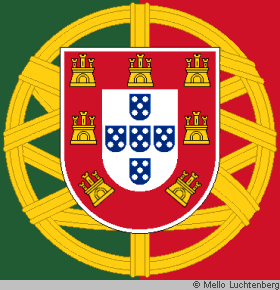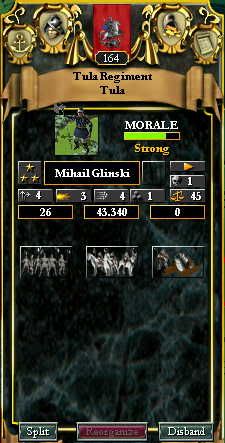The history of the Archduchy of Austria
In 1492, Archduke Frederick III of Austria, Emperor of the Holy Roman Empire,
felt that his end was near. But he knew that, despite his old age, he would
have to act with resolve if the Archduchy was to take it's rightfull place in
these troubled times. From Spain and Portugal, more and more reports came in of lands as yet unconquered, and if there were people there, they had not
heard of Jesus Christ. In the east, the situation was even worse, as the
Ottoman hordes, who knew of Jesus Christ, but denounced him, marched ever further on.
Despite his old age, Frederick was full of resolve, and knew what would be
expected of Austria. Let Spain and Portugal christianise these new lands,
Austria would lead the way in stemming the Ottoman tide. Diplomats were sent to Hungary to discuss an alliance, and a further general was added to the council, further weakening the voice of the admirals and merchants in
Flandern.
The Hungarians were at least as eager to stem the Ottoman tide, and in april
they invited Austrian troops to take part in an expedition to overthrow the
Ottoman puppet government in Moldavia. Meanwhile, Austrian diplomats were
busy strengthening the Austrian position in southern Germany, strengthening
ties with many of the stronger factions.
Reports were slowly coming into the country, though, that a new threat was
rising in the south. It seemed that the Doge of Venice was suffering from
megalomania, he had his troops conquer Mantua already, and now it seemed
Venetian troops stood ready to invade Milan aswell. Frederick issued a stern
warning, and hoped that that would prove enough.
Early in 1493 more disturbing news was received, it seemed that the entire
garrison in Franche-Comté had been wiped out by the French, the last survivor having died of his wounds after delivering word of the attack to Alsace.
It seemed, however, that the French operated under the assumption that this army was not Austrian, but instead an army of Lorraine. The king of France duly appologised, and offered fair compensation to Austria and the families of the victims.
Austrian spirits were lifted up even more when the Hungarians reported that
they had overthrown the Ottoman puppets in Moldavia.
The whole nation was in mourning, however, when Frederick died on the 19th of August, 1493, at the age of 77. More grieving, however, was the loss of the Imperial crown to one Kelly of Munster - a man noone seemed to know, yet in the end, he got the most votes. Reports of dark sorcery have been circulating ever since, but it seems that bishops sent to investigate mysteriously disappear.
Fredericks son, Maximilian, became the next Archduke, and he guided the
Archduchy with the same vision that his father had. Knowing that Austria's
destiny awaited in the east, and insulted by the lost election, he payed
little heed to events in Northern Germany, and when the French king
approached him concerning Artois, he sent his top diplomats, and they were
soon able to arrange a suitable outcome, France would pay a significant sum
in exchange for the liege rights to this territory.
All this time, the doge of Venice was asking, and in an increasingly
belligerent tone, that Austria cease it's objections to a Venetian takeover
in Milan. Maximilian, however, knew that he had to be steadfast, lest Austria
be seen as a pushover.
The situation in northern Germany was increasingly hostile, however, and the
Bohemians asked for Austrian assistance in driving away the Hanoverian robber barons that had conquered Würzburg. An army under Garnons was dispatched, and order was soon restored in Würzburg. It would take a few more years, and an army under another able leader, von Frundsberg, to force the Hanoverians to accept the situation.
May, 1498, saw the expected conflict in Italy burst, as Venetian troops
stormed Milanese border garrisons, and soon layed siege to Milan itself.
Strong words did not make the doge turn back, so in June, Maximilian issued
the orders, and Austrian troops overwhelmed Venetian border guards, Austrian troops soon laid sieges to Mantua, Venézia and Triest.
in March, 1499, the doge further escalated the conflict, by expelling all
Milanese nobles, and treating Milan as just a city in Venetian lands.
Maximilian could, ofcourse, not accept this situations, and sent his demands
to Venice, Milan was to be restored as an independent city. He was well aware that Venetian influence was likely to remain strong, but this was the best he could do. The doge, reluctantly, agreed.
Maximilian, it seemed, was a visionary, for the events that unfolded in 1500
showed him right. Pro-Venetian nobles in Milan were ousted, and the city
council begged him to take control of the city, to which he agreed. But the
shockwaves went further, and the doge himself fell, and was replaced.
Only when the new doge was installed, did the true horror of the reign of the
previous doge become apparent, the Venetian economy was in tatters, cities
were in revolt, the people fearing that their religion was threatened.
The next few years passed rather uneventfull, relations with Venice were
strengthened, Austrian influence in Wurtemberg increased, and relations with
France deteriorated as a result of French agression against Genoa. The
Ottoman puppet regime was ousted, and Wallachia added to Hungary. A
suspicious civil war in Hungary, no doubt instigated by Ottoman elements, was quelled.
The year is now 1513, and Austria, under the rulership of the wise Archduke,
Maximilian, has a glorious, though likely bloody, future ahead of her.




















